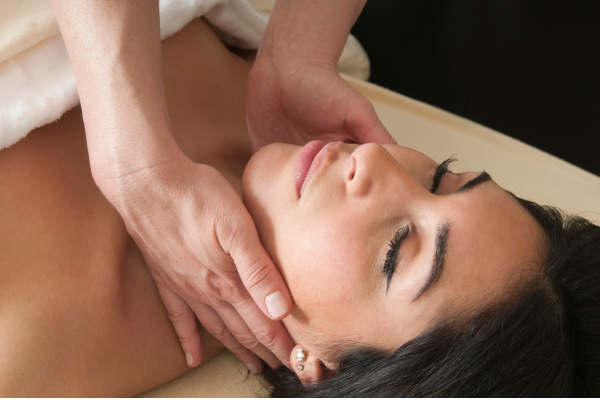By Kandy Powell
•
October 17, 2024
If you’re looking for a natural way to boost your health, reduce swelling, and promote healing, lymphatic drainage massage might be the perfect solution. This gentle, therapeutic technique has gained popularity, especially for those recovering from surgery, but its benefits extend far beyond post-operative care. In this guide, we’ll explore the ins and outs of lymphatic drainage massage, its many benefits, and why it could be an essential part of your wellness routine. What Is Lymphatic Drainage Massage? Lymphatic drainage massage is a specialised technique designed to encourage the movement of lymph fluids throughout the body. The lymphatic system is crucial for immune function, detoxification, and maintaining fluid balance. Unlike the circulatory system, the lymphatic system doesn’t have its own pump, relying on movement and muscle contractions to flow. This is where lymphatic drainage massage comes in—it gently stimulates lymph flow, helping your body eliminate toxins, reduce swelling, and support overall health. Benefits of Lymphatic Drainage Massage Lymphatic drainage massage offers a range of benefits for both general wellness and specific health concerns. Here’s why people turn to this therapy: 1. Reduces Swelling and Fluid Retention One of the key benefits of lymphatic drainage massage is its ability to reduce swelling, also known as oedema, and fluid retention. This is particularly helpful for individuals recovering from surgery, as the body often retains excess fluids post-op. The massage encourages the movement of lymphatic fluids, which helps alleviate bloating and swelling. 2. Boosts the Immune System The lymphatic system plays a vital role in supporting the immune system. By promoting the circulation of lymph fluids, this massage helps remove toxins and waste from the body, making your immune system more effective at fighting off infections and maintaining your health. 3. Speeds Up Post-Surgery Recovery For those who have undergone surgeries such as liposuction, tummy tuck, breast augmentation, facelift, or Brazilian butt lift (BBL), lymphatic drainage massage can significantly speed up recovery. It reduces post-operative swelling, bruising, and discomfort, while promoting faster healing of surgical incisions. Many patients report quicker recovery times and improved comfort after incorporating lymphatic massage into their post-op care. 4. Improves Skin Appearance Lymphatic massage can also improve the appearance of your skin. By enhancing circulation and reducing toxins, it helps to reduce the appearance of cellulite, smooth the skin, and promote a healthy, radiant glow. Over time, regular sessions can lead to better skin elasticity and tone. 5. Detoxifies the Body In our daily lives, we’re exposed to toxins through food, air, and other environmental factors. Lymphatic drainage massage supports the body’s natural detoxification process by improving the flow of lymph fluid, which helps remove toxins and waste. This can leave you feeling lighter, more energized, and rejuvenated. 6. Relieves Fatigue and Stress The slow, rhythmic strokes of lymphatic massage not only stimulate the lymphatic system but also provide deep relaxation. Many people experience reduced stress levels and feel more rejuvenated after a session. Additionally, the improved circulation from the massage helps alleviate fatigue and gives you a much-needed energy boost. Why Lymphatic Drainage Massage is Essential for Post-Op Recovery If you’re recovering from surgery, especially cosmetic procedures like liposuction, tummy tucks, or breast surgeries, lymphatic drainage massage can be a game-changer. Surgery often leads to swelling, bruising, and fluid retention, which can be uncomfortable and slow down the healing process. Lymphatic drainage massage helps to: - Reduce Swelling and Bruising: By promoting lymph flow, the massage reduces the buildup of fluids and alleviates swelling, making you more comfortable. - Improve Healing Time: The enhanced circulation aids in faster healing of incisions and reduces the risk of complications. - Alleviate Pain and Discomfort: The gentle technique relieves post-operative pain, tension, and tightness in the tissues. Many doctors recommend starting lymphatic drainage massage within 24-48 hours after surgery, as early intervention can significantly improve the recovery process. What to Expect During a Lymphatic Drainage Massage If you’ve never had a lymphatic drainage massage, you might be wondering what it’s like. The treatment is gentle, involving light, rhythmic strokes that follow the direction of lymph flow. Unlike traditional massages, there is no deep pressure applied, making it suitable even for those recovering from surgery or experiencing discomfort. Here’s what to expect during a typical session: 1. Consultation: Your therapist will begin by discussing your health, surgery (if applicable), and any specific concerns you have. 2. Relaxing Environment: You’ll lie down in a comfortable position, either at home (if using a mobile service) or in a clinic. 3. Gentle, Targeted Strokes: The therapist will use slow, gentle strokes to stimulate your lymphatic system. They may focus on specific areas prone to fluid buildup, such as your abdomen, legs, or arms. 4. Duration: A typical session lasts between 60-90 minutes, depending on your needs and goals. 5. Aftercare: After the massage, it’s essential to drink plenty of water to help flush out the toxins that have been released during the session. How Often Should You Get Lymphatic Drainage Massage? The frequency of lymphatic drainage massage depends on your needs. If you’re recovering from surgery, you might benefit from multiple sessions in the first few weeks post-op to reduce swelling and promote healing. For general wellness or maintenance, a monthly session can help support your immune system, detoxification, and overall health. Mobile Lymphatic Drainage Massage: Recovery Made Easy At Care Next Door, we offer mobile lymphatic drainage massage services, bringing the benefits of this healing treatment right to your home or hotel. This convenience is particularly helpful for post-op patients who may find it challenging to travel in the early stages of recovery. You can enjoy a relaxing, restorative massage without leaving the comfort of your own space, promoting faster healing and reducing stress. Lymphatic drainage massage is a powerful yet gentle therapy that offers a multitude of health benefits, from speeding up post-surgery recovery to boosting your immune system and improving skin appearance. Whether you’re recovering from surgery or simply looking to detoxify and rejuvenate, this massage is a natural way to support your body’s healing process. If you’re ready to experience the benefits of lymphatic drainage massage, Care Next Door is here to help. Our mobile service ensures you can enjoy the treatment in the comfort of your own home, making your recovery journey easier and more comfortable. Contact us today to book your session and take the first step towards better health and healing.





